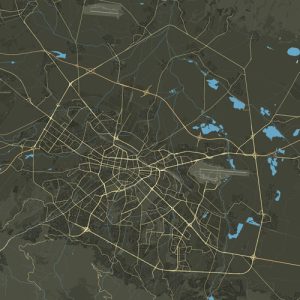“Slatina” unfolds as a historical village and erstwhile neighborhood that once graced the outskirts of Sofia, Bulgaria, situated a mere 4.8 kilometers southeast of the contemporary city center. This erstwhile village has left its indelible mark, and its name reverberates through the annals of Sofia’s administrative landscape, encapsulating both an administrative district and an industrial zone, now encapsulated within the broader residential expanse of “Hristo Smirnenski.”
Unveiling a rich historical tapestry, the roots of Slatina delve deep into antiquity, notably highlighted by the discovery of the Slatina Neolithic settlement in 1928. This archaeological gem, dating back to the 6th millennium BC, stands testament to the early human presence in the Sofia region.
The first written whispers of Slatina emerge from Ottoman registers in the 15th century, echoing its enduring presence through the centuries. The toponym, widely echoed across Southeast Europe, is steeped in significance, denoting a ‘salt spring,’ perhaps hinting at the natural resources that contributed to its allure.
During the interwar period, Slatina burgeoned into a burgeoning suburb of Sofia, witnessing a surge in population and growth. By 1934, its charm attracted approximately 6,800 inhabitants, encompassing distinctive hamlets such as “Knyaz Kiril Preslavski” (“Dunyatsite”), “Tsaritsa Joana” (“Karo”), and “Tsar Boris” (“Robov dol”). The march of time, marked by the decree of November 9, 1961, saw Slatina formally annexed into Sofia, paving the way for subsequent transformations.
The metamorphosis unfolded with the altering landscape, the ebb, and flow of the Slatinska River shaping the destiny of the old village. The left bank of the river witnessed the rise of residential blocks, culminating in the formation of the contemporary “Hristo Smirnenski” residential complex. Over the ensuing decades, the river emerged as a natural demarcation, delineating the “Slatina” district to the east from the evolving “Hristo Smirnenski” residential complex to the west. The trajectory of development eventually saw both sides of the river woven into the fabric of the residential complex, an evolving narrative that continues to echo the legacy of Slatina within Sofia’s urban mosaic.

